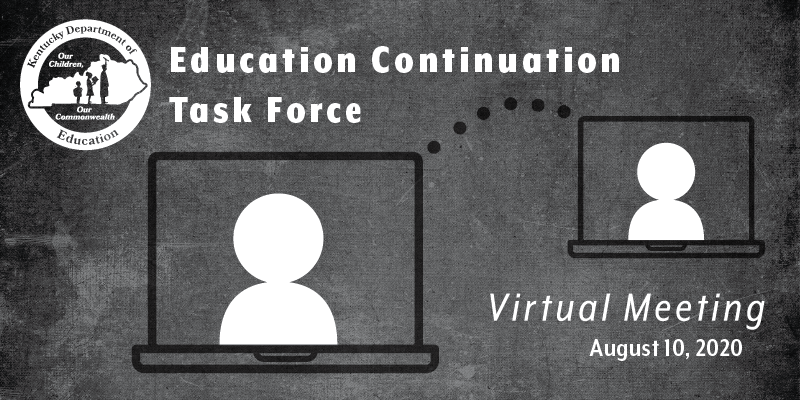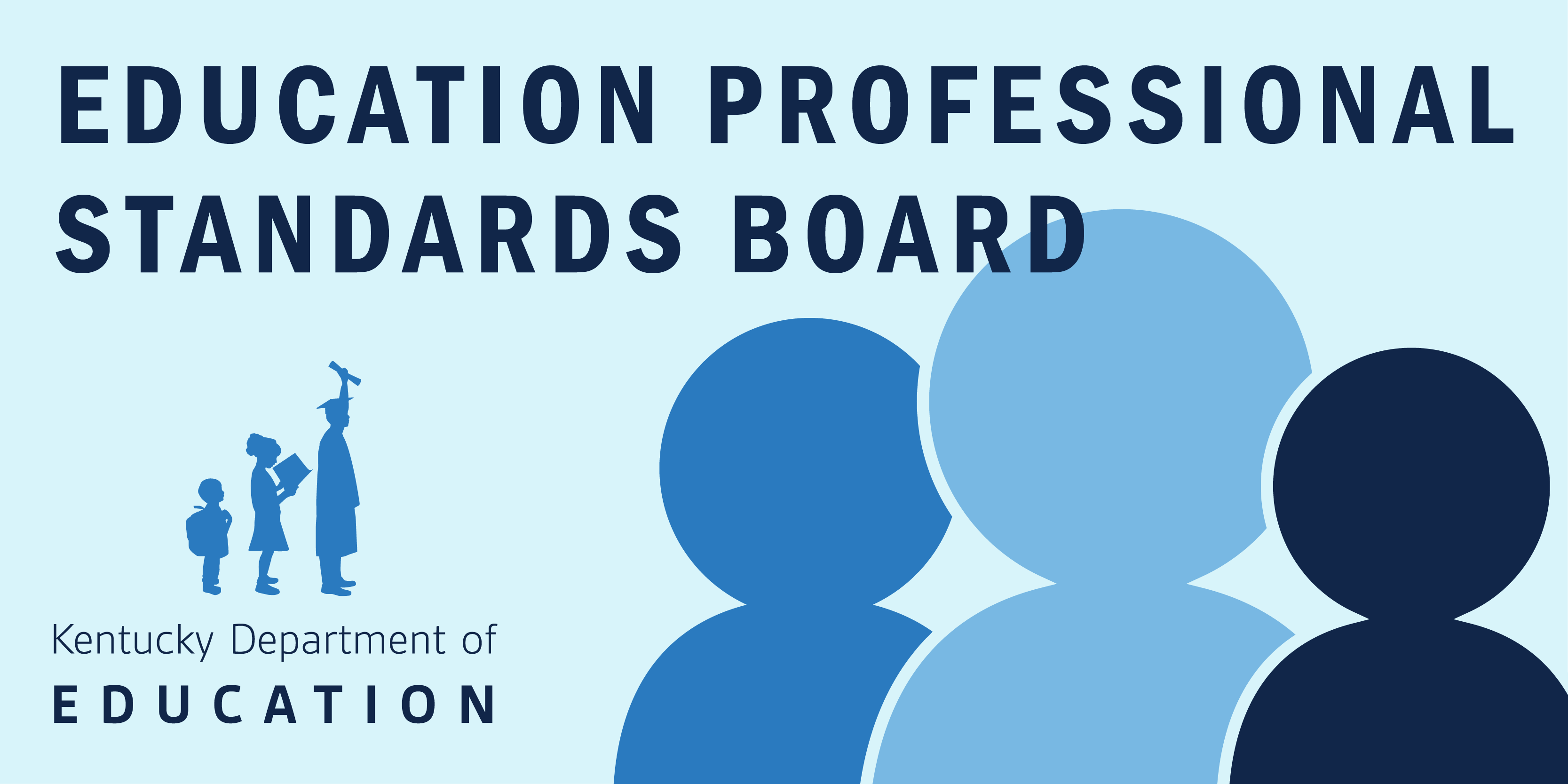
At the Aug. 10 Education Continuation Task Force virtual meeting, members discussed the potential challenges of teacher evaluations during the 2020-2021 school year.
In response to the COVID-19 pandemic, Senate Bill 177 (2020) gave Kentucky school districts the ability to modify their Certified Evaluation Plan (CEP), but only for the 2019-2020 school year. Under the legislation, districts were able to modify their CEP to align to needs related to evaluation and make changes appropriately for what works best for their educators.
David Johnson, executive director of the Southeast/South-Central Education Cooperative, said teacher evaluations for the next school year will be a “heavy lift” for districts and require “focused, dedicated work.”
“What good teaching looks like virtually is going to look somewhat different than what it’s going to look like face-to-face,” he said. “While the principles are the same, how they are applied may look very different.”
Johnson clarified to fellow task force members that he is not saying evaluations shouldn’t take place. However, he said he feels there needs to be “a lot of forethought going into it about how we make it a fair system.”
Brent McKim, president of the Jefferson County Teachers’ Association, pointed out that aside from the experience they gained in the spring, most teachers in the Commonwealth are “kind of novice” at virtual instruction.
He recommended that, at the very least, districts avoid anything that would be a part of a summative evaluation until schools go back to in-person instruction.
“If there are significant problems, a formative observation could lead to a directive … to address any significant issues,” said McKim. “As long as we are in this virtual scenario, it seems like teachers should not be worrying about something that would contribute to their summative evaluation.”
Johnson, echoing the concerns about limited experience raised by McKim, said the virtual period of instruction during the next school year should be focused on providing feedback and growth.
“For the vast majority of our folks, they are novice at what we’re trying to do, but we do want to use the information we’re gathering to grow in our profession,” he said.
Johnson said another challenge to consider is the limited experience of the evaluator in evaluating teachers during virtual instruction.
“As a principal, to know even what to look for when we’re trying to determine … what a good online instruction should look like, I think that’s a challenge,” he said. “… That’s something that our average, everyday principal has not been trained in and doesn’t know what to look for.”
New KDE Reopening Guidance
Also on Aug. 10, KDE released two COVID-19 guidance documents, one on setting class sizes and the other on the operation of school libraries.
The “Library Media Center” guidance covers staff preparation, social distancing and sanitation, operation during in-person instruction and NTI, and related guidance and resources.
During the presentation of this guidance to the task force, James Allen of KDE’s Office of Education Technology stressed the importance of classroom instructors utilizing the library media specialists within their school.
“A lot of times, I feel like some teachers feel kind of on their own in terms of providing quality content for kids,” he said. “This is just a reminder to lean on your school librarians to help you with that. …
“They (library media specialists) are not there to just check out books. They are there to help the entire school, and that’s every student and every teacher in the building.”
The second guidance document released, “Class Sizes in Virtual Programs and Courses,” details appropriate student-teacher ratios for virtual learning courses to ensure the most effective instruction. It also describes how to set class sizes in schools with site-based decision-making (SBDM) councils and how to seek class size exemptions for schools without SBDMs.
“During the last two superintendent webcasts, we heard a lot of questions around this topic,” said KDE Associate Commissioner Kelly Foster.
Foster explained that maximum class sizes established in KRS 157.360(5)(a) do not apply to schools with an SBDM. Instead, the policies and procedures of the SBDM should be consulted and revised as needed to ensure locally established class size maximums are appropriate in light of the re-opening plans of the district and school.
Schools and programs that lack an SBDM must comply with maximum class size guidelines outlined in KRS 157.460(5)(a).
However, a superintendent of an impacted school or program can request an exemption “when unusual circumstances warrant an increased class size,” said Foster.
Any superintendent seeking an exemption for one or more general education classes in one or more schools or programs should contact Foster at Kelly.foster@education.ky.gov to receive a form to complete.
Kentucky Department for Public Health
Officials from the Kentucky Department for Public Health (DPH) joined task force members for a question and answer period during the virtual meeting.
Johnson asked the health experts if they have seen any numbers – specifically on increases in positivity rates and the number of positive cases – from surrounding states that have decided to open their school buildings for in-person instruction.
“We are seeing some increases,” said Dr. Connie White, DPH deputy commissioner. “The more you get people together, the more there is going to be that chance of transmission. The only way we’re going to completely stop transmission is if we all stayed home forever, and that’s not possible emotionally, physically, mentally for us.”
White didn’t have specific numbers on surrounding states during the task force meeting, but said she would work to provide numbers at the Aug. 9 Special Superintendents’ Webcast.
Since the last Education Continuation Task Force meeting on July 27, the flagship Healthy at School guidance document has seen revisions.
Interim Education Commissioner Kevin C. Brown reminded the task force that all of KDE’s guidance are “living, breathing documents.”
The updates, which are based on the latest guidance from the U.S. Centers for Disease Control and Prevention (CDC), can be found on Page 6. One of these updates allows the use of plexiglass dividers in classrooms if they are fastened securely and cleaned regularly.
“That does not mean shower curtains or anything that would have toxic fumes if it burned,” said White.
White said that any dividers that are hung in classrooms should not interfere with students and faculty exiting the classroom. In addition, she said any plexiglass used as a divider should have smooth edges to limit the chance of someone injuring themselves.
The Education Continuation Task Force will meet again on Aug. 24.



Leave A Comment